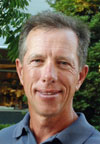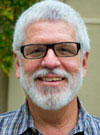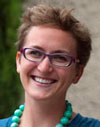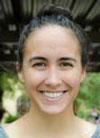|
Student Project
Resource People
Student project resource people
are individuals with a variety of professional backgrounds who have agreed to
assist students with their projects. Specific expertises include mechanical
engineering, occupational therapy, medical devices, assistive technology
devices, and prosthetics / orthotics.
 |
- Deborah E. Kenney, MS,
OTR/L
- kenney5 -at- comcast.net
- Debbie Kenney has
been an occupational therapist at the VA Palo Alto Health Care System for the
last 17 years - working both in the clinic and at the VA Rehabilitation
Research & Development (RR&D) Center where she has collaborated on
numerous design and research projects with the engineers and graduate students.
Her work has included testing and integrating technology into the
rehabilitation setting in the areas of Parkinson's Disease, CVA (stroke),
Spinal Cord Injury, hand therapy, and balance as related to aging. Ms. Kenney
currently splits her time between her clinical work with post-stroke survivors
(REACH) and the RR&D Center. She is also a frequent guest lecturer with the
Multiple Sclerosis Society of Santa Clara.
|
 |
- Douglas F. Schwandt,
MS
- doug.schwandt -at-
gmail.com
- 650/464-3578
- Doug Schwandt began
his career in Rehabilitation Engineering with a Stanford ME210 (now ME310)
design project, on a student team creating the Handbike, the first arm-powered
two-wheeled bicycle for lower-limb disabled. After graduation, he continued the
Handbike development, and went on to design various other devices for the
disabled with the Design Development team at the Palo Alto VA Rehab R&D
Center, including finger-spelling hands, hyper/hypo gravity devices and
specialty cycle ergometers. Over the years, Doug has also consulted on various
exciting and challenging projects outside of the VA, including exercise
concepts for long-term space travel, MRI compatible fixtures and mobility
devices, and robots for physical therapy. No longer a VA employee, Doug
continues to work as a consultant to universities and companies as a free-lance
consulting design engineer, and part-time as a springboard diving
coach.
|
 |
- Mark Felling, EE,
MBA
- mark -at-
broadenedhorizons.com
- 612/851-1040 ext 101
- Mark Felling began
designing and inventing solutions both for himself and others soon after his
plane crash in 2003 using his engineering background and experience teaching
testing and quality to development groups at high-tech companies around the
world. Guided by an intimate understanding of the unique needs of wheelchair
users with upper extremity limitations as a C5 quadriplegic himself, Mark
created Broadened Horizons to
introduce solutions focusing on innovative simplicity to maximize
cost efficiency, compatibility, reliability, and ease of use.
Mark and
Broadened Horizons can also be
found on Facebook.
|
 |
- Gary M. Berke, MS, CP,
FAAOP
- gmberke -at-
stanford.edu
- 650/365-5861
- Gary M. Berke is an
Adjunct Clinical Assistant Professor and Director of Prosthetics in Stanford's
Department of Orthopaedic Surgery and owner of
Gary M. Berke Prosthetics /
Orthotics in Redwood City. He has worked and lectured nationally and
internationally on prosthetic care and has multiple publications. He has a keen
interest in investigating cost effective technologies for enhancement of the
lives of those required to use prostheses and orthoses daily while reducing the
cost of prothetic and orthotic care in the future.
|
 |
- Jules Sherman
- jules -at-
julessherman.com
- 805/705-9433
- Jules Sherman is a
designer and entrepreneur who is passionate about designing human-centered
products that improve quality of life. She draws inspiration from both personal
experience and observing the world around her. Jules came to Stanford to pursue
her interests in human-factors, human-machine interaction, social ventures, and
the business of design. As a product designer, she is particularly interested
in improving the aesthetics and usability of assistive technology.
|
 |
- Craig Milroy
- milroy -at- stanford.edu
- 650/723-2179
- Director of the Product Realization
Lab
- Craig Milroy serves
as Senior Lecturer at Stanford University in the Design Division of Mechanical
Engineering and manages the Product Realization Lab, a
teaching facility where Stanford students come to learn design, manufacturing,
and prototyping. His concentration is on product conceptualization, and
strategic planning during the design process. Craig teaches over four courses
each year in design and engineering, including the first course at Stanford
devoted solely to the development of medical devices. He started his career as
an engineer in the Biomechanics Laboratories of the Department of Orthopedics,
University of Iowa, where he helped develop an artificial hip replacement, and
studied knee and wrist pathomechanics. He was previously employed at Raychem
Corporation, where he was involved in the conceptualization and engineering of
multiple product lines and technological products. His last position at Raychem
was as Department Manager, Product Design Group, responsible for development of
the strategic planning process. Throughout his career, Craig has done
considerable engineering consulting and holds 11 patents. His educational
background includes a Bachelor's Degree in Biomedical Engineering from the
University of Iowa, and two Master's degrees from Stanford University
(Mechanical Engineering and Product Design).
|
 |
- Marlo Dreissigacker
Kohn
- marlod -at- stanford.edu
- 650/248-1939
- Associate Director of the Product
Realization Lab
|
 |
- Carly Geehr
- cgeehr -at- stanford.edu
- Lecturer, Manager of the Product
Realization Lab's Room 36
|
|







